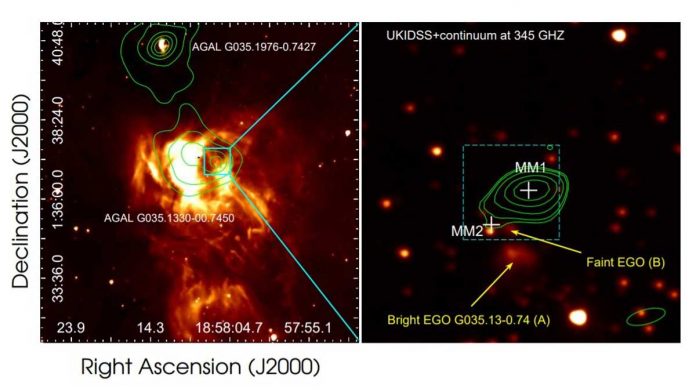Astronomers from Argentinian have used the Atacama Large Millimetre Array (ALMA) and found out a massive molecular clump called AGAL35. This finding has been published in the arXiv preprint server. This finding can help to understand the process of star formation.
Fragmentation of massive molecular clumps makes high-mass stars. Self-gravity collapses such clumps into multiple cores. But scientists do not clearly know if individual monolithic core makes massive star or hierarchical collapse of a molecular clump makes massive star.
AGAL35 is 6,850 light years away from the Earth. It is an infrared-quiet, massive molecular clump. The star experienced limited fragmentation. This is why it has been considered as a good source to study the early massive star-forming processes.
University of Buenos Aires in Argentina astronomer Martin E. Ortega and his team have done research on the fragmentation of the molecular gas of the AGAL35. They wanted to know about its internal structure. They have used data from ALMA.
The scientists found AGAL35 have four infrared-quiet dust cores. The masses are below 3 solar masses. So, its masses are smaller than previously thought. The dust cores are named as C1, C2, C3 and C4. C1 and C2 emits acetonitrile. C3 and C4 are well collimated and have low-mass molecular outflows. These outflows are related to molecular hydrogen emission-line objects.
The temperature of C1 and C2 are about 180 and 100 K. C1 is 40 percent more massive than the sun. C2 is around 0.9 solar masses. Researchers think these two objects are hot corinos. The inner regions of these objects have young stellar objects (YSOs).
The four cores have low mass. Scientists think that competitive accretion mechanism has made such massive molecular clump like AGAL35.

